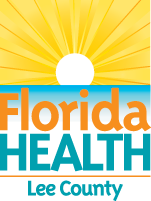It's a New Day in Public Health.
The Florida Department of Health works to protect, promote, and improve the health of all people in Florida through integrated state, county, and community efforts.
DOH-LEE REMINDS PUBLIC OF POTENTIAL RISKS ASSOCIATED WITH VIBRIO VULNIFICUS
October 03, 2022
DOH-LEE REMINDS PUBLIC OF POTENTIAL RISKS ASSOCIATED WITH VIBRIO VULNIFICUS
FOR IMMEDIATE RELEASEOctober 3, 2022
Contact:
Tammy Soliz, Public Information Officer
Lee-PIO@flhealth.gov
(239) 308-5196
DOH-LEE REMINDS PUBLIC OF POTENTIAL RISKS ASSOCIATED WITH VIBRIO VULNIFICUS
Lee County, Fla. – Flood waters and standing waters following a hurricane pose many risks, including infectious diseases such as Vibrio vulnificus. For that reason, the Florida Department of Health in Lee County (DOH-Lee) is urging the public to take precautions against infection and illness caused by Vibrio vulnificus.
Vibrio vulnificus is a bacterium that usually lives in warm, brackish sea water. These bacteria typically grow faster during warmer months. Sewage spills in coastal waters, like those caused by Hurricane Ian, may increase bacteria levels. People with open wounds, cuts, or scratches can be exposed to Vibrio vulnificus through direct contact with sea water or brackish water. Brackish water is a mixture of fresh and sea water and is often found where rivers meet the sea. Vibrio vulnificus can also cause disease in those who eat raw or undercooked oysters and shellfish. Vibrio vulnificus has the potential to cause severe illness or death.
Vibrio vulnificus can cause an infection of the skin when open wounds are exposed to warm sea water. These infections may lead to skin breakdown and ulcers. Anyone can get a Vibrio vulnificus infection; however, infections can be severe for people with weakened immune systems, especially people who have chronic liver disease or take medications that lowers the body's ability to fight germs. Vibrio vulnificus can invade the bloodstream, causing a severe life-threatening illness with symptoms like fever, chills, decreased blood pressure (septic shock), and blistering skin lesions. Vibrio vulnificus is not spread person-to-person.
If someone is concerned that they may have been exposed to Vibrio vulnificus and are experiencing the above symptoms, they should seek medical attention immediately. Individuals with wound infections should also seek care promptly.
DOH-Lee recommends the following tips to stay healthy and safe:
- If you have open wounds, cuts, or scratches, stay out of flood water, standing water, sea water and brackish water, if possible.
- Immediately clean and monitor wounds and cuts thoroughly with soap and clean running water or bottled water after contact with flood water, standing water, sea water, brackish water or raw or undercooked seafood and its juices.
- Cover your wounds with a waterproof bandage if it could come in contact with flood water, standing water, sea water or brackish water.
- Seek immediate medical care if a wound develops redness, swelling, or oozing, or other signs of infection such as fever, increasing pain, shortness of breath, fast or high heart rate, or confusion or disorientation.
For more information on Vibrio vulnificus, please visit the Florida Department of Health’s Vibrio vulnificus website.
About the Florida Department of Health
The department, nationally accredited by the Public Health Accreditation Board, works to protect, promote and improve the health of all people in Florida through integrated state, county and community efforts.
Follow us on Twitter at @HealthyFla and on Facebook. For more information about the Florida Department of Health please visit www.FloridaHealth.gov.
For Media Inquiries
Newsroom
Statewide Articles
JavaScript must be enabled in your browser to display articles




Connect with DOH